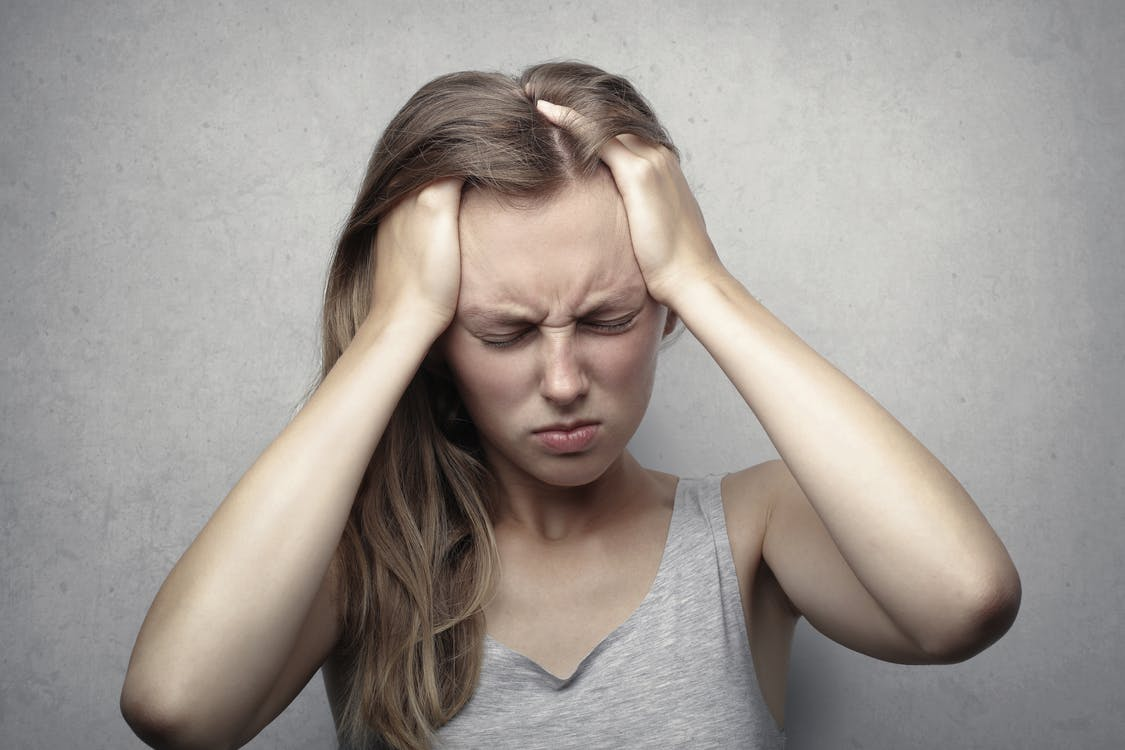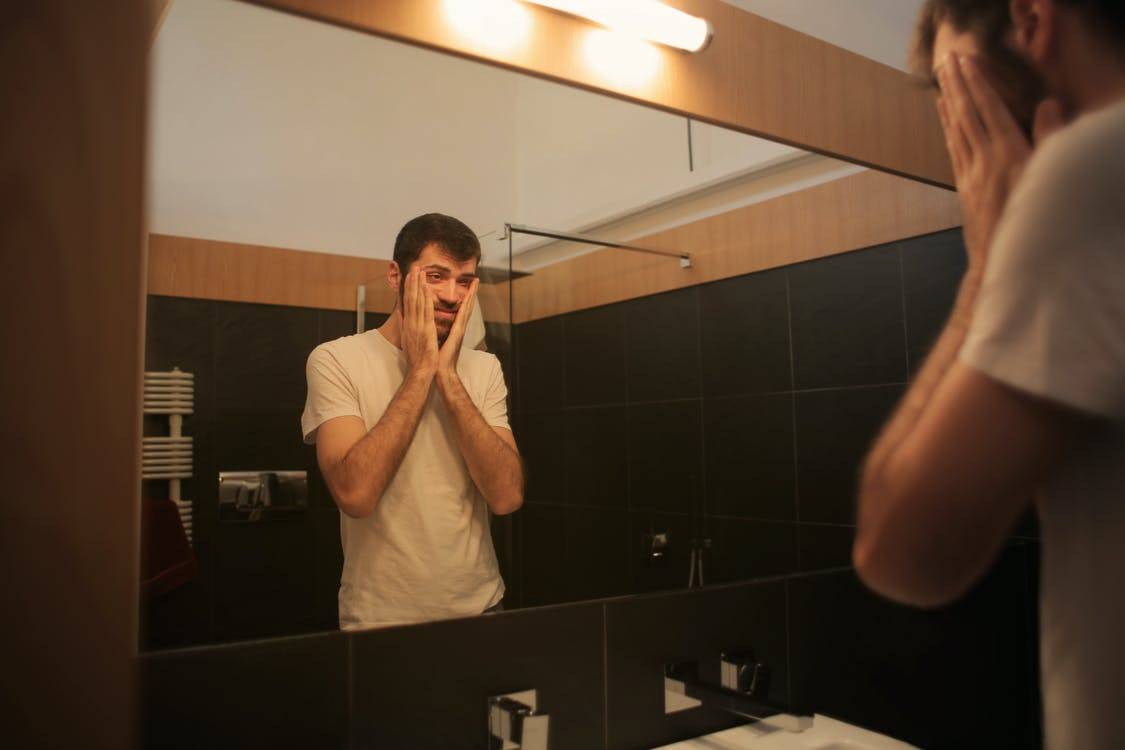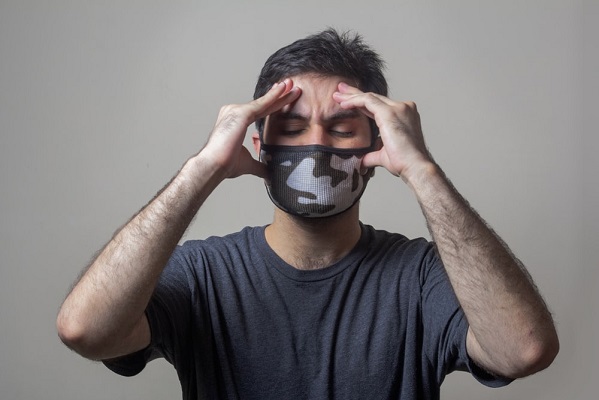13 Types of Headaches and Their Causes

We’ve all experienced headaches. For some of us, they’re low-grade while they make others want to bang their head. But one thing’s for sure – we all want to get rid of them as fast as we possibly can.
In the medical terminology, headache is any pain that occurs in your head region. There are 150 different types of headaches. Some affect your entire head while others only hurt half your head. The pain could vary too; you may experience sharp, mild or a throbbing pain.
Broadly speaking, there are two main groups we can classify the condition in: primary headaches and secondary headaches.
Primary Headaches
Primary headaches do not have any underlying reason. They’re usually triggered by overuse or problem in the pain-sensitive region of our mind. They can be caused by certain lifestyle factors. Headaches such as cluster headaches, migraines, and tension headaches are the most common types of primary headaches.

Secondary Headaches
These headaches usually occur due to some underlying illness. Problems such as a sinus issue, carbon monoxide poisoning, dehydration, and many others can trigger secondary headaches.
Let’s have a look at the 13 most common types of secondary headaches and why they’re caused.
1.Cluster Headaches
Cluster headaches occur behind one eye or on one side of the face. You would feel a sharp pain in the affected area, sometimes accompanied by redness, flushing, and swelling. You may even experience sweating in the affected region.
These headaches usually occur in clusters with regular breaks. An average human can experience the headache three to four times a day for several days. One episode can last for 15 minutes to three hours, then disappear and reappear during some other time of the day.
The exact cause of this headache is unknown but it is believed that irregularities in your biological clock can result in you experiencing this headache. Unlike many other types of headaches, cluster headaches do not have an identifiable trigger.
2.Tension Headaches

Are you feeling dull and experiencing pain all across your head? You may have a tension headache. These headaches aren’t sharp or throbbing. Nothing an OTC tension relief caplet can’t fix.
Tension headaches are triggered by certain foods, activities, or stressors. They occur when the muscles in your head and neck region experience contraction. Poor posture and excessive eye strain, lack of sleep, dehydration, fatigue, and a few other issues may also trigger a tension headache.
3.Migraine

A migraine is categorized as intense throbbing pain. A migraine can last for more than three days at an end. Migraines usually occur on one side of your head and can occur with other symptoms such as nausea and vomiting. You may also experience certain auras before your pain starts to build up. An aura may make you see flashing or shimmering light, stars, and blind spots.
You may be experiencing migraines because these attacks run in your genes. Or you could have a nervous system problem that’s causing these pulsating pains. Women are three times more susceptible to getting a migraine. People who are suffering from post-traumatic stress disorder may be more prone to pain. Migraine may be triggered due to environmental factors such as improper sleep, dehydration, hormone fluctuation, or chemical exposure. People who suffer from migraine headaches are usually sensitive to light and sound. A strong headache OTC medication would help you get relief from the condition.
4.Sinus Headache
Headaches can also be triggered by sinusitis or allergies. These headaches affect the frontal region of your brain, near your nose and forehead. Migraines are often misdiagnosed as sinus headaches. If you’re suffering from sinusitis or develop chronic seasonal allergies, you’re prone to get these headaches. A sinus headache could also be a symbol that you’ve got a sinus infection.
They’re usually cured by relieving your sinus pressure via thinning out mucus from that area. OTC drugs work well for these headaches.
5.Hypertension Headaches
High blood pressure is referred to as hypertension. And when your blood pressure shoots up to dangerous limits, it causes your head to ache.
When going through a hypertension headache, you will feel pain in your whole head that may be throbbing. Along with a headache, you will also experience chest pain, numbness, shortness of breath, and a nose bleed. If you’re going through a hypertension headache, you need to visit a doctor immediately. The headache would fade away as soon as your blood pressure comes back to normal.
6.Caffeine Headaches
Can’t function without three cups of coffee a day? You may be prone to caffeine headaches. Excessive caffeine intake can trigger a headache, and so can caffeine withdrawal. Caffeine affects your blood flow and alters your body’s chemistry. So, when you’ve made your body used to a certain amount of caffeine, your body will start hurting if you don’t provide the adequate caffeine fix every day.
However, not everyone who takes tea or coffee experiences these headaches. But you should always keep your intake steady and limited to a reasonable amount to avoid any such conditions.
7.Rebound Headaches
Rebound headaches occur due to drug overuse… no, not that type of drug. These occur when you’re constantly relying on pain relief drugs or other OTC medications. You may feel a mute tension-like headache or have a migraine-like pulsating pain.
You become prone to rebound headaches when you’re using OTC medications such as ibuprofen or aspirin for more than half the days of a month.
The only treatment is to slowly and gradually accustom yourself away from excessive drug use. You may have to go through pain at the beginning of the process, but this pain dies over time.
8.Hormone Headaches
Women experience hormone headaches when the estrogen levels in their bodies fluctuate. A sub-type of hormone headache is called menstrual migraine, which occurs when a woman is menstruating. These not only occur during menses but can also happen before or after the period and even when you’re ovulating. Other reasons that may cause an estrogen imbalance, leading to these aches are birth control pills and pregnancy.
Research suggests that around 60 percent of women who suffer from regular migraines also experience menstrual migraines. Lifestyle changes like doing yoga, acupressure, etc., help in alleviating the pain. Because it is such a recurring issue, people tend to incline toward dietary supplements and OTC drugs for relief. You could order Pain Relief Online drug for headaches, too if your condition isn’t improving.
9.Post-traumatic Headaches
When you survive a head injury, it’s common to get a headache due to a concussion. However, if your headache comes back after 7 days of your injury, you may be suffering from what’s called a post-traumatic headache. These happen due to improper blood flow to your brain or muscle tension in your head region.
Post-traumatic headaches could mimic tension-like symptoms, showing mute pain across the head. But most likely you would experience migraine-like pulsating pain accompanied by nausea and vomiting. These headaches tend to worsen as you increase your activity.
10.Exertion Headaches

The name’s pretty self-explanatory. When you tire yourself out too much, you start experiencing an exertion headache. Intense physical activities such as weight lifting, sexual intercourse, and strenuous exercising can trigger an exertion headache in you.
Your exertion headache could be primary or secondary. Exertion headaches should technically go away after a few hours, once your body’s blood flow is back to normal. You could take medications such as ibuprofen to get relief. However, if the symptoms are consistent or keep getting worse, it’s crucial that you see a doctor. This is because, at times, exertion headaches may be a symptom of an underlying serious problem such as a tumor in your brain. Your doctor will suggest CT scans or an MRI if they suspect anything of that sort.
11.Ice Pick Headaches
Feel like someone is stabbing you in the face with ice picks? Yep, you’ve got the ice pick headache. They’re often called stabbing headaches too, for obvious reasons. They usually affect your temples and eyes. You may feel the impact for a few seconds and then it goes away. It may come back at the exact same spot or a different one.
People usually get them between the ages of 40 to 50. People susceptible to cluster headaches or migraines usually suffer from ice pick headaches too. However, they aren’t the cause. There seems to be nothing causing these headaches. Bright light, stress, and sudden movement may trigger the headache.
To figure out why you get these headaches, it’s a good idea to track your triggers. See if you started experiencing the pain after a stressful start to your day or were you out in the sun much before your episodes began. These will help you prevent the headache from happening again.
12.Cervicogenic Headaches
You must have gotten an idea that headaches can be triggered by a lot of factors. And one of those many triggers is neck problems. If your headache is caused by problems in your neck, it’s called cervicogenic headache or CH for short. The two main symptoms of this type of headache are a sudden activity of your neck causing pain in your head and your head hurting because your neck was still in one position for quite a while.
These headaches can be caused due to multiple reasons, and at times it’s almost impossible to figure out what caused the headache. However, usually, it happens due to issues in the bones in your neck called your vertebrae. Other times, it’s because of neck joints or muscle issues. Your posture over time can cause problems in your neck, leading to these headaches. Some professionals such as hairdressers and carpenters get these headaches because their work requires them to keep their heads in a certain position for long periods.
13.Thunderclap Headaches
This is rare and can be potentially life-threatening. Thunderclap headaches are described to start abruptly and cause excruciating pain. They’re also accompanied by nausea and vomiting. People have described it to be the worst pain of their lifetime. If you feel such a sudden headache, you need to visit the doctor immediately. This could be caused due to bleeding in some part of your brain. Don’t confuse the symptoms with migraines. The main difference between the two is that migraine creeps in slowly and builds up its intensity whereas thunderclap headaches occur suddenly and would catch you in shock just like a thunder sound does. In addition to nausea and vomiting, you may also experience numbness, seizures, confusion, and vision changes. Your doctor will conduct a CT scan or MRI to know your situation better. And based on what the cause of this headache is, your doctor will give you the appropriate treatment.
How to Deal with Headaches

Some headaches, such as thunderclap headaches or chronic cluster headaches, require proper medical care. You should visit a trusted doctor who would examine you and prescribe the right medications. Other headaches are normal to happen and can be cured by taking OTC drugs at home. You can relax a bit and wait for the symptoms to go away. In case that doesn’t happen, and the pain is recurring or is increasing, visit your nearest hospital.
Order Pain Relief Online
So, if you’re looking to treat your tension headaches or any other non-threatening headaches, you can now order the best pain relief drugs for headaches from our online OTC pharmaceutical store and Dietary Supplement rangeat HealthA2Z and NaturaA2Z. We’ve got a variety of OTC drugs and health supplements that are manufactured in FDA-registered facilities. You can purchase anything from the best and low cost dietary supplement products, laxative tablets, Affordable Aspirin tablets to the strongest headache medicine from our website or Amazon store. We’re a company invested in research and development to provide you the best customer care and the best quality products. To facilitate you in every way possible, we’ve also set up easy shipping and returns policies. And in case you have any queries or questions, you can reach out to us via email or phone.







